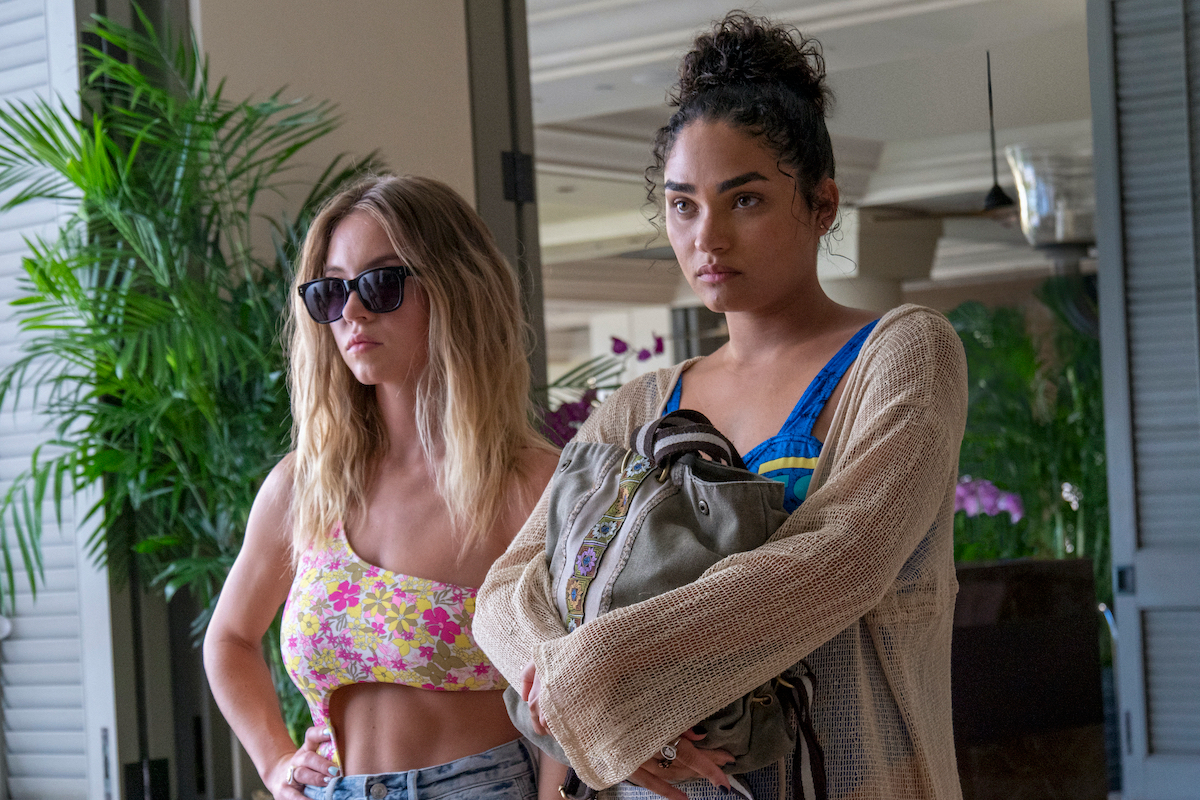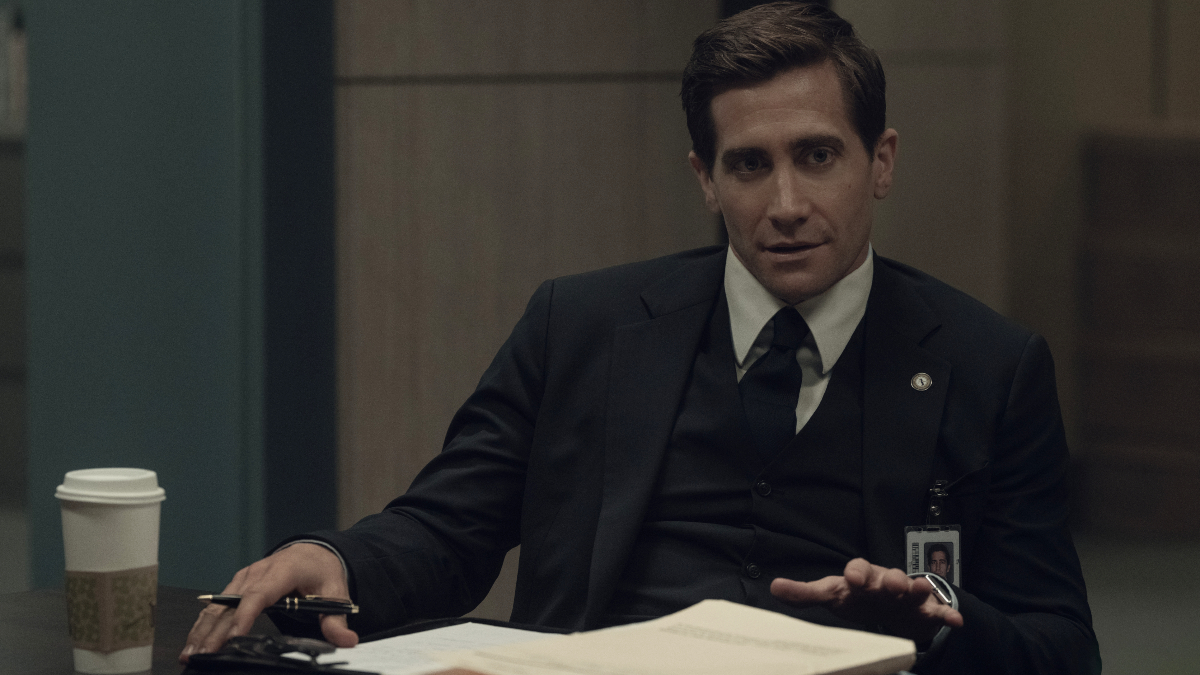**Warning: Major spoilers for the finale of The White Lotus ahead**
Watching the finale of HBO’s The White Lotus, I was struck by how well the show followed through on its themes of complacent privilege by allowing its characters to end their arcs ultimately unchanged.
While I’m sure it left a lot of viewers feeling disappointed, these endings are realistic. This upwardly mobile complacency was most noticeable in Rachel (Alexandra Daddario), since we watched her make an active decision to take the easy route to wealth and comfort, staying with her husband (Jake Lacy) whom she so clearly dislikes. But pretty much every character went through their own personal crisis, only to return to their lives essentially unchanged.
i don’t understand feeling “conflicted” about the ending like what made u think the white people wouldn’t all just go home happy like??
— hunter harris (@hunteryharris) August 16, 2021
A lot of people who end up legit villains have origin stories that just look like choosing their own comfort a bunch of times in a row. #TheWhiteLotus
— Linda Holmes Thinks You’re Doing Great (@lindaholmes) August 16, 2021
The journeys these characters go through during their week at the White Lotus happen on a slight gradient. Tanya (Jennifer Coolidge) got to “break her patterns” and you might feel hope for her, but in the end, she traded in the opportunity to change Belinda’s (Natasha Rothwell) life and possibly her own in order to chase her own comfort. Paula probably comes the closest to real transformation, spending the week rightly condemning white privilege and imperialism before ruining the life of one of the only native Hawaiian characters on the show. And while she may be suffering inwardly, she still ends this journey right where she started, returning home, with the suggestion being that she’s not even going to sever her friendship with Olivia.
The fact that none of the characters really change is not a failing of the show, it’s the whole point.
Well, not none. Two characters did end up in very different places than where they started, with very different forms of escape. Armond (Murray Bartlett) died and Quinn (Fred Hechinger) got his Hōkūleʻa. Armond left the island and Quinn got to stay. Both men got to transcend the show’s overarching message that nothing and no one changes.
So perhaps it’s not surprising to hear the show’s writer/director/creator Mike White say in a recent interview with Vulture’s Kathryn VanArendonk that those are the two characters to which he most relates on a personal level.
White says he wasn’t sure what to do with the character of Quinn when he first started writing the show, and he says initially he thought Paula might be the one to run off and stay on the island:
As I started building [the ending] out, though, I thought, I relate to Armond, but I also relate to this kid. Maybe it’s my Survivor experiences. How do I get away from this phone? How do I get away from this culture? Take me away! I thought it’d be interesting to have a kid who doesn’t have much of a life, and is a creature of this time, have this numinous experience and see going back [to his previous life] as a kind of death. I’m not necessarily fantasizing about paddling to Fiji, but being somewhere where I’m free from my devices, free of the discourse, free of all the conversations that he’s experiencing at dinner between his mom and his sister — I want to check out. Let me out of this.
VanArendonk pushes back a bit, saying, “I get the sympathy of wanting to get in the boat and paddle away, but he’s also a tourist who co-opts this place for his own ends.”
White responds:
I think you’re also saying that it plays into the trope of the magical locals, this pastoral life. It’s a fantasy; it’s definitely a fantasy. But I also felt like the show is calibrated with a lot of caustic observations, and there might be room for a little bit of fantasy and hope at the end there. It does take place in a Hawaiian setting, and that’s complicated. I’m sure I’ll get some criticism along these lines. But I also felt like I’ve had my own honest experience of that. I’ve had that moment where it’s like, This is so magical. I feel connected to these people and this space. There’s real beauty here. Sartre says there are no perfect moments, and I’m like, No! This is it! I had this!
I didn’t want to land in a cynical place in the end, even though it’s dark for some of the other characters. For him, I felt like, give him a little bit of a fantasy ending.
The kind of dark satire that White has created here is incredibly tricky. In addition to storytelling skills, it takes real self-awareness to offer this kind of critical depiction of an issue like white privilege without actually deconstructing it in any way, just by presenting it as-is. And White, who wrote the show by himself, without a writers room, comes very close. His characters present interesting ideas about things like the place of white men in society (both a punching bag on Social Justice Twitter and also Doing Just Fine, as always), but then White undermines everything he’s created by ultimately allowing those white male characters to become the center of the narrative in the final act–by giving them an arguably unearned “fantasy ending.”
When Mark (Steve Zahn) insists that he’s one of the “good” white guys, claiming to be the guy in the room who tells all the “bigots” to cool it, it’s a laughable pretense. That point is driven home later with his shrug of a commentary on privilege and power: “Obviously, imperialism was bad. But it’s humanity. Welcome to America.” We are not meant to agree with Zahn, exactly, but neither are we supposed to just accept his complacency and move on. At least, that’s what I thought. But when White speaks about these issues, I’m less sure of his intentions. He actually sounds a lot like Mark.
Here’s what White recently told the New Yorker about his decision to buy a home in Hanalei, Kauai:
I have a place in Hanalei, and there’s all these tech bros. The tech world has found Hanalei. So there’s these huge houses—not my house—that are being sold for thirty million right on the beach. Mark Zuckerberg has a place there. And I’d be, like, Ugh, those guys. They own the world! And then I was, like, I am that guy. The people who live there [in Hanalei] and have lived there their whole lives, they’re all being displaced. And it’s a small enough place that you can kind of hold it all in your head in a way that you can’t in a place like L.A. It’s a complex place, and I didn’t feel like I could tell the story of the native Hawaiians and their struggles to fight some of their battles, but I felt like I could kind of come at it from the way I experienced it. At first, it’s, like, It’s so beautiful! I’m in touch with nature and it’s so healing. Then you realize it’s on the backs of people who’ve had a complicated history with people like me.
In a really incisive piece for Vox, Mitchell Kuga, a journalist from Honolulu, sums it up: “By scraping at imperialism, The White Lotus mimes a moral center but never engages the topic beyond mere gesture. How could it, when the locals and Kānaka Maoli are depicted in only a single dimension?”
i do think white people love the white lotus because it satirizes privilege/class/servitude while still centering white people
— E. Alex Jung (@e_alexjung) July 19, 2021
While White offers his white male characters a sort of special treatment in transcending their own narrative, the Hawaiian characters are used as props in the white characters’ stories. Lani gives birth in the first episode, which jumpstarts Armond’s introspection, only to disappear entirely. The Hawaiian canoe paddlers change Quinn’s entire life simply by inviting him to join them, “as welcoming natives stereotypically do,” writes Kuga. “I don’t know if the show realizes it, but the scene — mimicking every corny cinematic depiction of Hawaii, from North Shore to 50 First Dates — is one of The White Lotus’s best claims to satire.”
One of the show’s most poignant moments came when Olivia finally confronts Paula about her role in the break-in. “Something really bad could have happened,” she says, to which Paula replies, “Something really bad did happen.” The implication is that Olivia, as “woke” as she thinks she is, doesn’t actually think about anyone beyond her own family. But for all of that commentary, the show all but forgets about Kai. We never see him again, and his story is only told through the framing of Paula’s guilt.
It will be interesting to see what White chooses to do with season two of The White Lotus, which will reportedly be set in a different location with all different characters. I hope that he chooses to go with a writers room rather than doing everything himself because otherwise, he’d be better off avoiding issues outside of wheelhouse. And if that’s the case, then the show loses pretty much all of its appeal.
Shitty white people love well produced shows about shitty white people being shitty and like, fine, whatever but also it’s getting old.
— Saeed Jones (@theferocity) August 16, 2021
(image: Mario Perez/HBO)
Want more stories like this? Become a subscriber and support the site!
—The Mary Sue has a strict comment policy that forbids, but is not limited to, personal insults toward anyone, hate speech, and trolling.—









